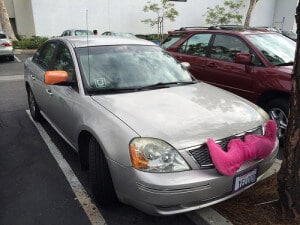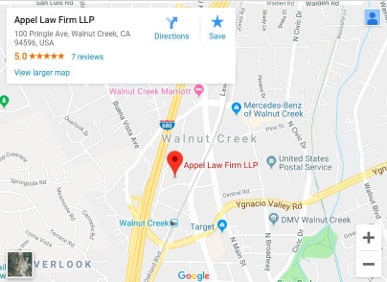
As you drive out of the parking lot, an uninsured motorist runs a red light and hits your car. You are rushed to the emergency room. Later, you are notified by the police that the other driver was at fault and that the negligent driver did not carry insurance on their vehicle. You’re relieved when you remember that you opted for UM/UIM on your auto policy. At least your policy will cover your medical bills, wage loss and pain and suffering from the incident. Or will it?
This article explores how driving for a TNC may void your UM/UIM coverage in California and whether TNC’s actually protect drivers in this unfortunate scenario.
The Livery Exclusion
Many auto insurance policies, under a clause known as the livery exception, generally exclude you from coverage if you are using your vehicle to transport passengers for a fee. In California, there are approximately 100 auto insurance companies. Each one has different language relevant to the livery exception. A typical exclusion is set forth below. Your exclusion may be different. You should read your policy.
We do not provide coverage … arising out of the ownership or operation of a vehicle while it is being used as a public or livery conveyance. This exclusion does not apply to a share-the-expense car pool.
As many TNC drivers know, insurance companies might deny coverage to TNC drivers that drive passengers for payment based on the above exclusion or a similar exclusion.
Will TNC Insurance Protect Rideshare Drivers?
Insurance coverage provided by a TNC depends on which of the three distinct periods of driving you are in when an accident occurs:
- Period 1: Your phone app is open and you are waiting for a match.
- Period 2: You have accepted a match and are on your way to pick up the passenger.
- Period 3: The passenger is in your car and you are on your way to the passenger’s destination.
TNCs, for the most part, have adequate insurance coverage for Periods 2 and 3. For example, both Uber and Lyft offer a $1,000,000 primary commercial liability and UM/UIM policy during these periods. It is clear that at this stage, you are using your vehicle for commercial purposes. However, TNCs do not provide adequate insurance coverage for Period 1. This is where the insurance gap occurs due to the lack of UM/UIM coverage available to drivers.
California Solution
In California, TNCs are regulated by the California Public Utilities Commission (CPUC). In 2014, Assembly Bill 2293 (2014) was passed and will go into effect tomorrow July 1, 2015. It requires TNCs to carry certain levels of insurance during each of the three periods. The law states that TNCs are required to have a minimum level of primary insurance for Period 1 in the amount of 50K/100K/25K. It also requires excess liability coverage in the amount of 200K per occurrence to cover any liability arising from a participating driver using a vehicle in connection with a TNC’s online-enabled application or platform. There are still some ambiguities created by the legislative language. Notably, there is no provision in the statutory language for uninsured or underinsured motorist coverage as there is for during Periods 2 and 3.
Insurance Gap
In order to recognize where insurance gap still exists, let’s look at the specific type of insurance offered right now to drivers of two of most popular TNC companies in Period 1.
- Uber – Contingent Liability Insurance ($50K Injury / $100K Total / $25K Property)
- Lyft – Contingent Liability Insurance ($50K Injury / $100K Total / $25K Property)
Uber and Lyft both offer contingent liability insurance in the amount of 50K/100K/25K. This means that Lyft or Uber’s insurance carrier will provide liability coverage only if the rideshare driver was involved in an accident, determined to be at fault, and the rideshare driver’s auto insurance denies coverage. 50/100/25 means that there is a $50K maximum limit per person, $100K maximum limit per accident, and a $25K maximum limit for property damage. The TNC’s liability policy does not provide coverage for: 1) bodily injury to the TNC driver; 2) damages to the TNC driver’s car, or 3) bodily injury or physical damage caused by an uninsured or underinsured motorist. Thus, there is no provision to cover our initial example of the rideshare driver being hit by an uninsured driver.
What coverage is available to the TNC driver if they are not at fault? Normally, if the TNC driver makes a claim or initiates a lawsuit against the driver at fault, that driver’s liability coverage would provide the primary insurance coverage for any potential bodily injuries. What if the driver at fault only carries a 15K liability policy or worse, no insurance coverage all? If this occurs the injured TNC driver’s personal UM/UIM coverage would be then be applicable (if purchased and part of the auto policy) as a means of recovering their medical bill expenses, wage loss, etc.
The insurance gap occurs if your personal auto policy denies coverage due the livery exclusion. This denial of coverage would include any UM/UIM coverage a driver may have purchased. This leaves the injured TNC driver without any insurance available to help them recover from the incident. This is the insurance gap that all rideshare drivers should know about when driving for a TNC.
Questions Left Unanswered
The new law taking effect tomorrow, July 1, 2015, may solve some problems, but it does address all of the outstanding insurance issues. At this time, there is still no UM/UIM insurance option offered by Lyft or Uber during Period 1. This leaves rideshare drivers at risk and without insurance coverage if their auto insurance policy denies coverage in the event of an accident during Period 1 that is clearly the fault of the other driver who is either uninsured or under insured.
Photo Credit: TheTruthAbout cc

Speak Your Mind